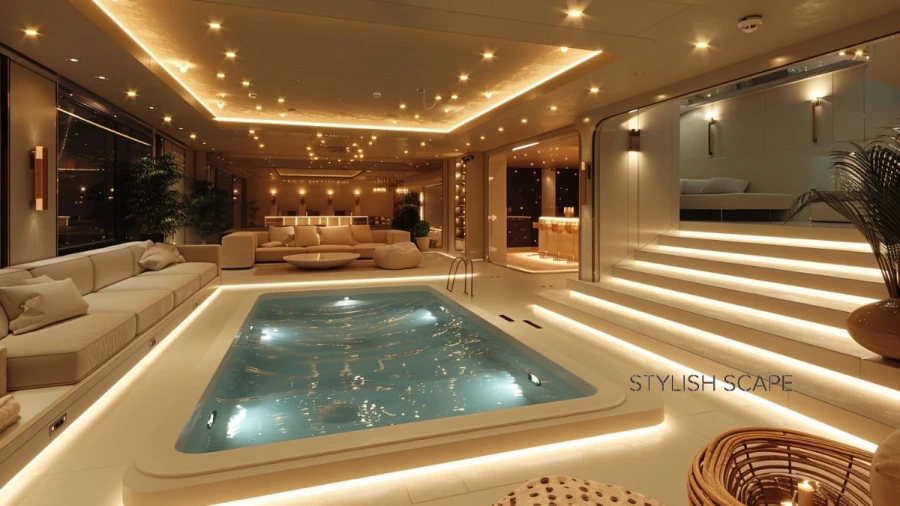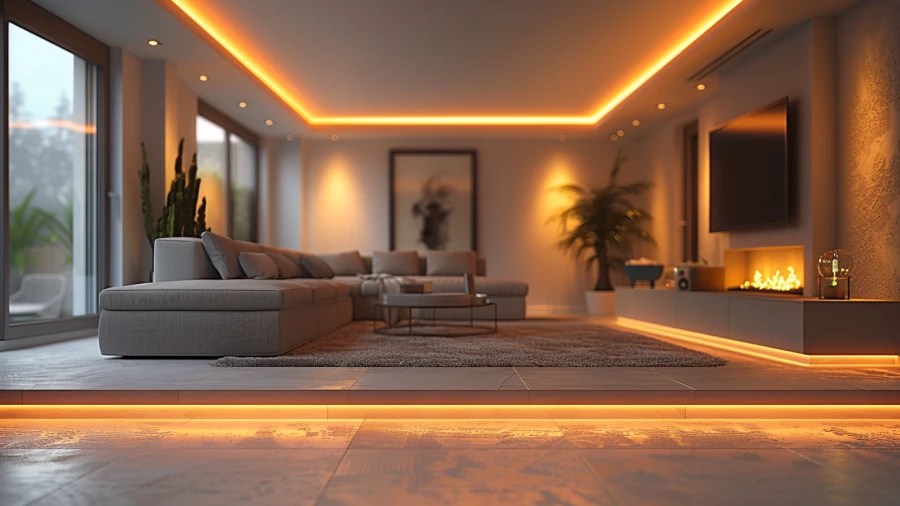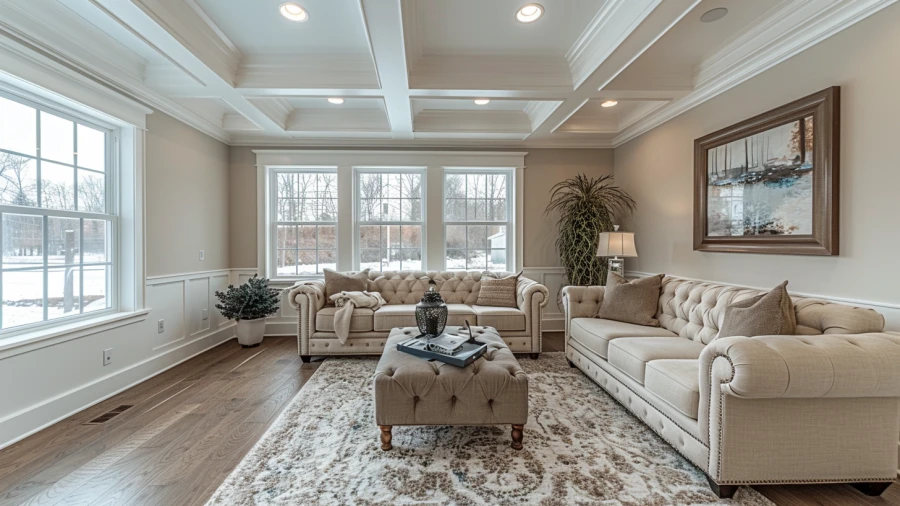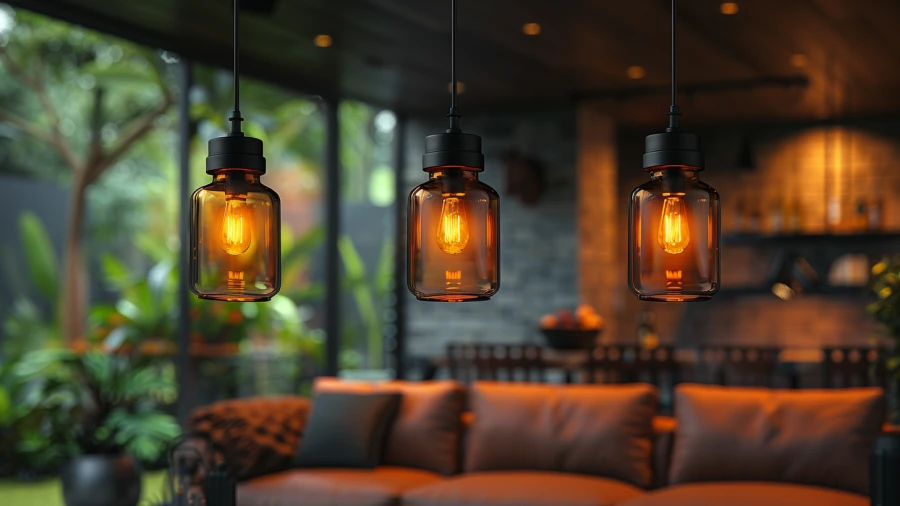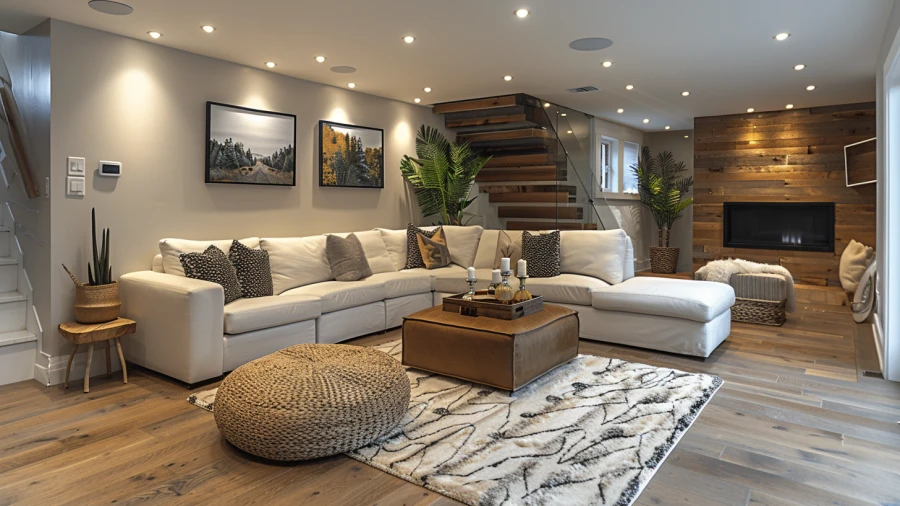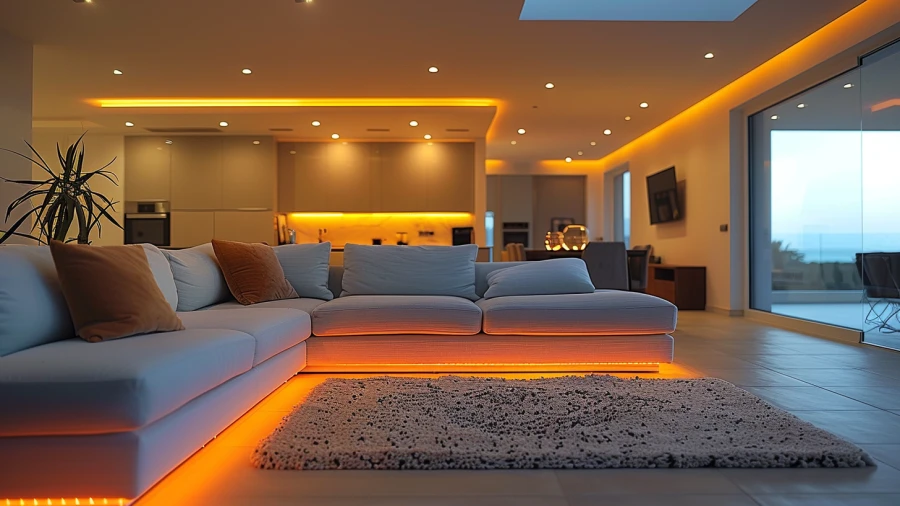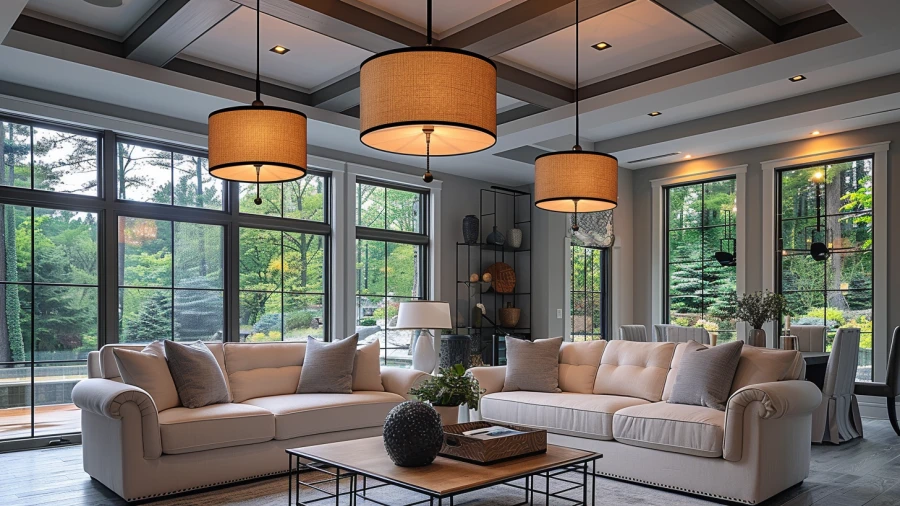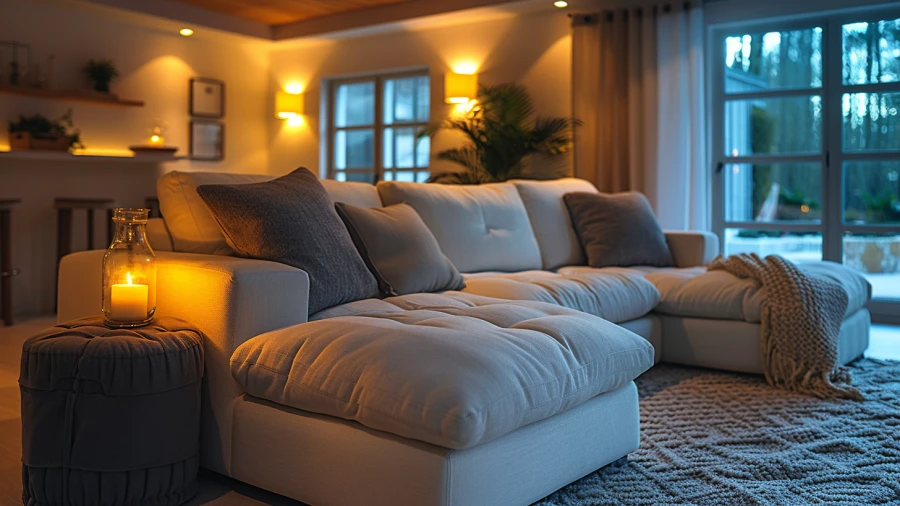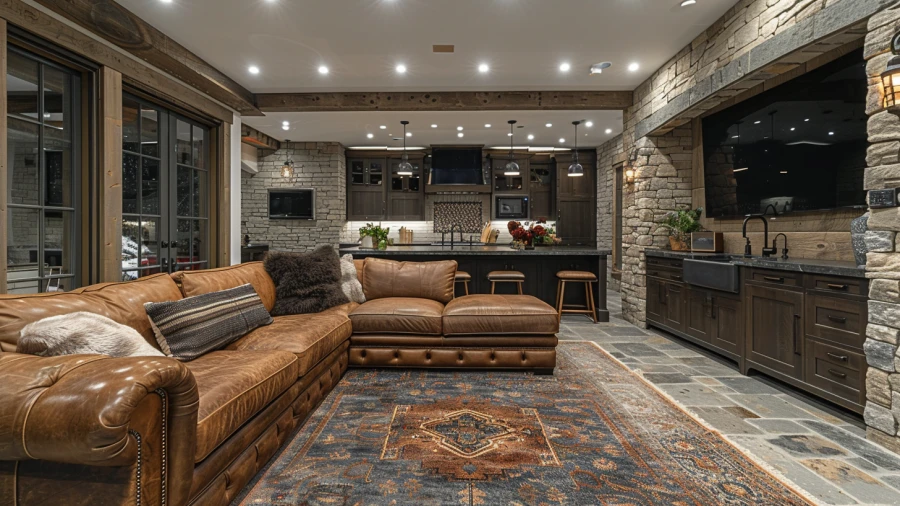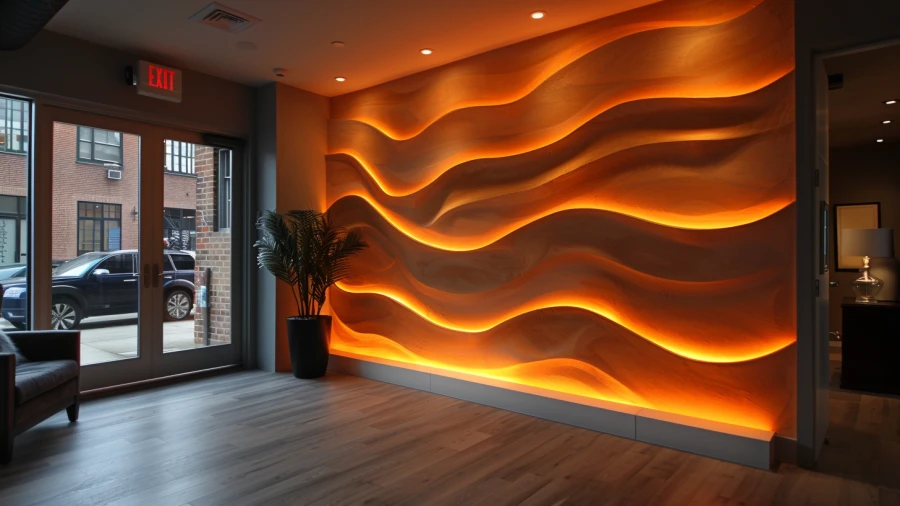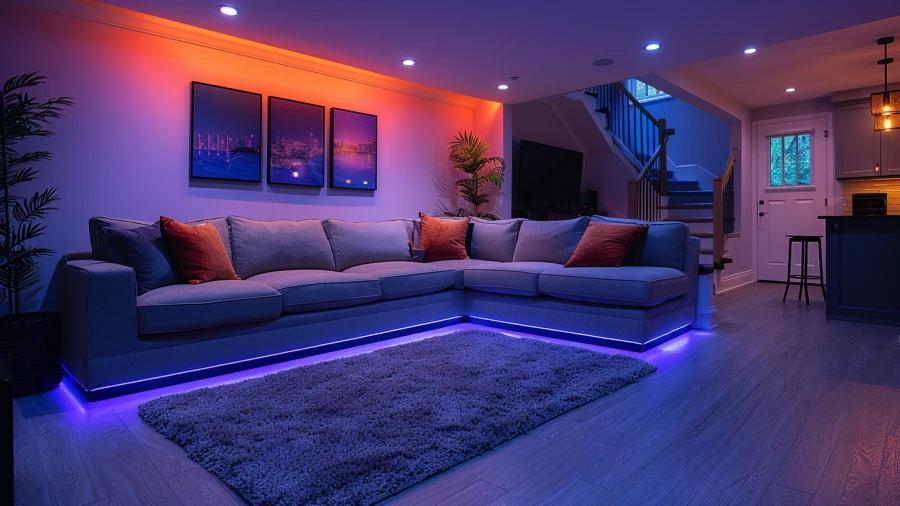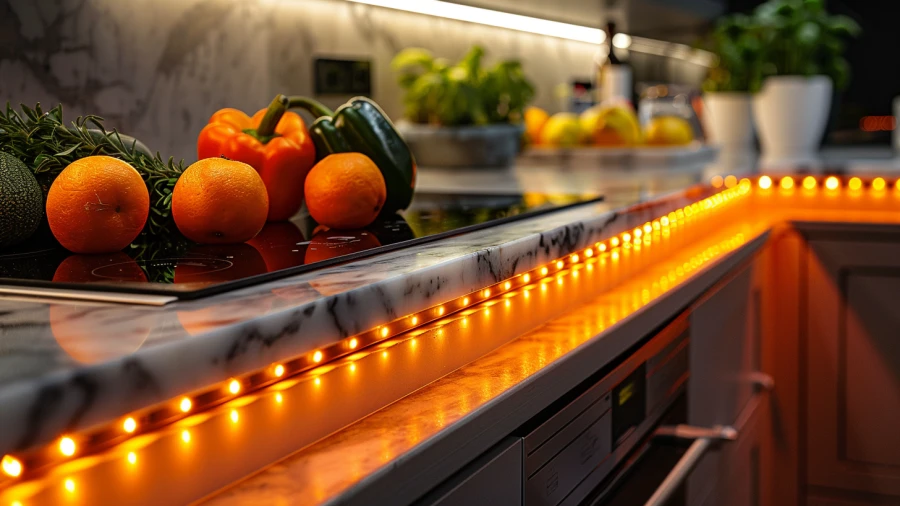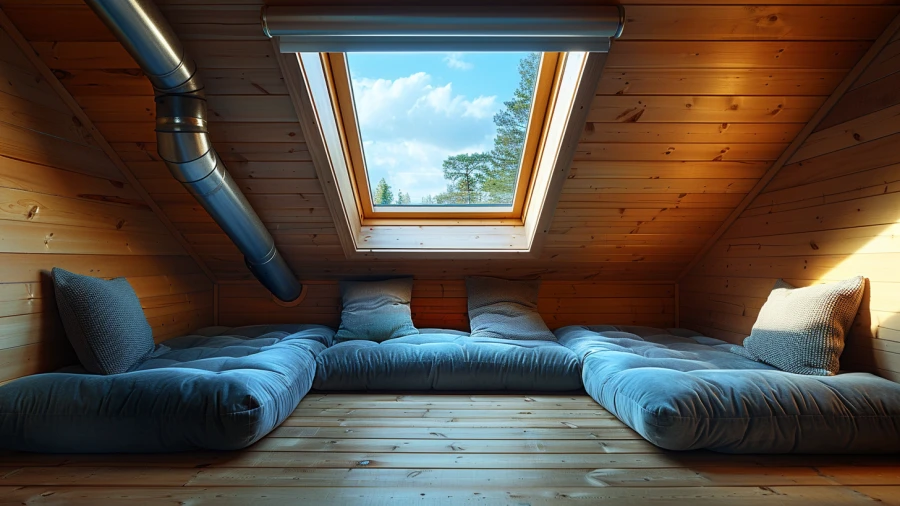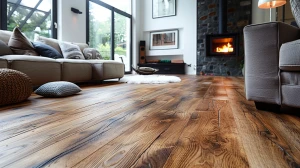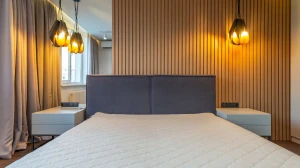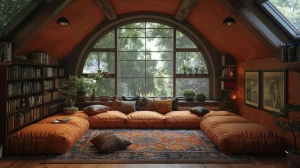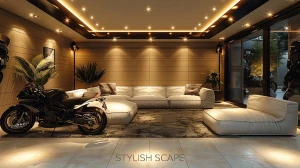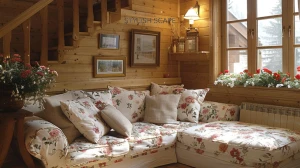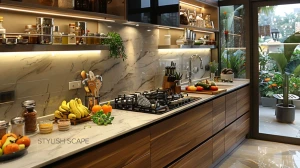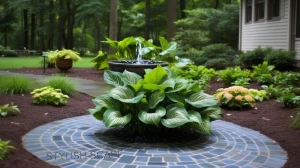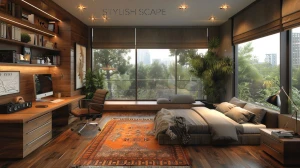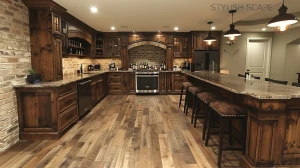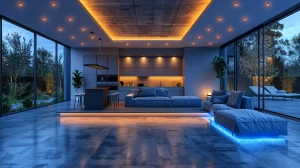
Best Basement Lighting Ideas to Brighten Up Your Living Area
Explore creative and practical Basement Lighting Ideas to enhance your space, From tray lighting to faux windows, discover how these Basement Lighting Ideas can transform your basement into a well-lit, inviting area.
by Priyanka P
Updated Aug 19, 2024
On This Page
- Basement Lighting
- Tray Lighting
- Faux Windows for Basement Lighting
- Recessed Lighting
- Pendant Lights for Basement Illumination
- Track Lighting
- Dimmer Switches for Flexible Basement Lighting
- Ceiling Fixtures
- Smart Lights for Modern Basement Lighting
- Sconce Lights
- Gimbal Recessed Lights for Targeted Basement Lighting
- Floor Lamps
- Wall Washers for Even Basement Lighting
- LED Strip Lights
- Under-Cabinet Lighting for Functional Basement Spaces
- Sun Tubes
- What is the Best Way to Choose Lighting for a Basement?
Basement Lighting
Lighting a basement is important because basements often lack natural light. To brighten the space, use a mix of lighting types. Recessed lights and ceiling fixtures provide general illumination, while floor lamps and wall sconces add extra light where needed.
Dimmer switches and smart lights offer flexibility for different activities. Consider adding LED lights for energy efficiency and long-lasting brightness. For style, try pendant lights or faux windows to create a cozy feel. Planning your lighting based on how you use the basement will make the space more functional and inviting.
Tray Lighting
Tray lighting is a stylish way to enhance your basement's ambiance by using a recessed, illuminated perimeter along the ceiling's edge. This design feature creates a soft, indirect light that fills the room with a warm glow, making it perfect for creating a cozy atmosphere.
You can install LED strip lights or rope lights within the tray to achieve this effect. Tray lighting is especially useful in basements with low ceilings, as it adds elegance without taking up extra space. The indirect nature of tray lighting helps to avoid harsh shadows and evenly distributes light, making your basement feel more inviting.
Additionally, using dimmers with tray lighting allows you to adjust the brightness according to the mood or activity, providing flexibility and enhancing the overall functionality of the space.
Faux Windows for Basement Lighting
Faux windows offer a creative solution for brightening up a basement without actual openings. These decorative panels simulate the appearance of real windows with trim and faux sunlight, adding visual interest and a sense of openness. They are mounted directly on the wall and can include features like blinds or curtains for added realism.
While faux windows don’t provide real natural light, they help create a more inviting and less claustrophobic atmosphere in a basement. They are a cost-effective way to improve the aesthetics of a space that lacks natural light. By choosing faux windows that complement your basement's decor, you can enhance its overall look and make it feel more like a traditional room in your home.
Recessed Lighting
Recessed lighting is an excellent choice for basements, as it provides a sleek and unobtrusive illumination. Installed directly into the ceiling, recessed lights only expose the trim, making them ideal for spaces with low ceilings. They offer even lighting across the room, helping to reduce shadows and brighten up the entire area.
Recessed lights can be equipped with dimmer switches to adjust the brightness according to your needs, from a bright work area to a soft, relaxing light. For added versatility, consider using gimbal recessed lights that can be angled to highlight specific areas or features in your basement. This type of lighting is both functional and stylish, enhancing the overall look and feel of your basement.
Pendant Lights for Basement Illumination
Pendant lights are a stylish and functional option for basement lighting. Hanging down from the ceiling, these fixtures come in various designs, from modern to vintage, making them a versatile choice for different decor styles. Pendant lights are particularly effective over areas like bars, dining tables, or workspaces, providing focused illumination where it's needed most.
They add a decorative element to the basement, creating a focal point and enhancing the room’s character. When choosing pendant lights, consider the height of your basement ceiling and the amount of light needed to ensure they provide adequate illumination without overwhelming the space. Pendant lights can also be combined with other lighting types to achieve a layered lighting effect.
Track Lighting
Track lighting is a flexible and versatile option for illuminating your basement. It consists of a track mounted on the ceiling with adjustable light heads that can be moved along the track to direct light where it’s needed. This makes it ideal for highlighting specific areas or features, such as artwork or workspaces.
Track lighting is particularly useful in basements with varied lighting needs, as you can adjust the light heads to focus on different parts of the room. However, for basements with low ceilings, consider positioning the track closer to the walls to avoid a cluttered appearance. Track lighting provides both functionality and style, allowing you to customize the lighting to fit your basement’s requirements.
Dimmer Switches for Flexible Basement Lighting
Dimmer switches are a valuable addition to your basement lighting setup, offering greater control over light levels. By adjusting the brightness, you can create the perfect lighting for various activities, from bright task lighting to a softer, more relaxing ambiance.
Dimmer switches are compatible with many types of lights, including recessed, pendant, and track lighting. Installing dimmers allows you to customize the lighting according to your needs and mood, making your basement more versatile and comfortable. They also help to save energy and extend the lifespan of your light bulbs. Incorporating dimmer switches into your basement lighting design provides both functionality and flexibility, enhancing your overall living experience.
Ceiling Fixtures
Ceiling fixtures are a practical and straightforward solution for lighting your basement. These fixtures are mounted directly to the ceiling and offer a broad, even distribution of light. Common types of ceiling fixtures include chandeliers, flush mounts, and semi-flush mounts. Ceiling fixtures are ideal for providing general illumination and can be chosen to match your basement’s decor.
They come in various styles, from modern to traditional, allowing you to select one that complements your space. While ceiling fixtures are effective for overall lighting, they may not be ideal for creating specific light zones. Combining ceiling fixtures with other lighting types, such as recessed or pendant lights, can enhance both function and aesthetics in your basement.
Smart Lights for Modern Basement Lighting
Smart lights are a cutting-edge solution for modernizing your basement lighting. These lights connect to your home network and can be controlled via smartphone apps or voice commands, offering convenience and flexibility. With smart lights, you can adjust brightness, color, and even set schedules to match your daily routines or moods.
They can be integrated with other smart home devices, such as voice assistants or security systems, for a cohesive smart home experience. Smart lights are also energy-efficient and come in a range of styles and color temperatures. By incorporating smart lights into your basement, you can enjoy customizable lighting that enhances both functionality and ambiance.
Sconce Lights
Sconce lights are wall-mounted fixtures that add both functionality and style to your basement. They can be installed to direct light upwards or downwards, depending on your needs. Sconces are perfect for accent lighting, providing a soft, diffuse light that enhances the atmosphere of the room.
They work well in hallways, near seating areas, or as complementary lighting alongside other fixtures. When selecting sconces, consider the design and placement to ensure they blend seamlessly with your basement’s decor. Sconce lights can also be combined with other lighting types, such as ceiling fixtures or floor lamps, to create a layered and inviting lighting scheme.
Gimbal Recessed Lights for Targeted Basement Lighting
Gimbal recessed lights are a specialized type of recessed lighting that offers flexibility and precision. Unlike standard recessed lights, gimbal lights have adjustable heads that can be tilted to direct light exactly where it’s needed. This makes them ideal for highlighting specific areas or features in your basement, such as artwork or architectural details.
Gimbal lights can be used to create focused lighting zones or to enhance certain parts of the room. They are particularly useful in basements where targeted lighting is required, allowing you to customize the illumination and showcase your space effectively. Combining gimbal recessed lights with other lighting types can achieve a balanced and functional lighting design.
Floor Lamps
Floor lamps are a versatile and portable lighting option for your basement. They stand on the floor and can be easily moved to different locations as needed. Floor lamps come in a variety of styles, from modern to classic, and can provide focused or ambient lighting depending on their design. They are ideal for creating cozy reading nooks, additional light sources near seating areas, or highlighting specific spots in the room.
Many floor lamps feature adjustable heights and brightness levels, allowing you to customize the lighting to suit different activities and moods. Floor lamps can also complement other lighting fixtures in your basement, adding both function and style.
Wall Washers for Even Basement Lighting
Wall washers are lighting fixtures designed to evenly distribute light across a wall’s surface. They provide a smooth, uniform illumination that helps to reduce shadows and brighten up the space. Wall washers are particularly useful in basements with limited natural light, as they enhance the overall light quality and make the room feel more open and airy.
They are ideal for highlighting architectural features or creating a soft, ambient glow. Wall washers can be used in conjunction with other lighting types to achieve a well-balanced lighting scheme. By installing wall washers, you can improve the visual appeal of your basement and enhance its overall ambiance.
LED Strip Lights
LED strip lights are a modern and flexible lighting solution for basements. These strips are adhesive-backed and can be installed along ceilings, walls, or under cabinets to provide continuous, even light. LED strip lights are energy-efficient and come in various colors and brightness levels, allowing you to customize the lighting to fit your basement’s needs.
They are perfect for adding accent lighting or creating a contemporary look. LED strip lights are easy to install and can be cut to fit different lengths, making them a versatile choice for various applications. Incorporating LED strip lights into your basement design can enhance both functionality and style.
Under-Cabinet Lighting for Functional Basement Spaces
Under-cabinet lighting is a practical addition to basements used for work or storage. By installing lights beneath cabinets, you can illuminate countertops, workspaces, or shelves, making tasks easier and more efficient. This type of lighting reduces shadows and provides targeted illumination where it's needed most.
Under-cabinet lights are available in various styles, including LED strips and small fixtures, and can be installed with motion sensors or dimmers for added convenience. This lighting solution is ideal for basements with functional areas like kitchens, home offices, or craft rooms, improving visibility and making the space more user-friendly.
Sun Tubes
Sun tubes, also known as solar tubes or light tubes, are an innovative way to bring natural light into your basement. They consist of reflective tubes that capture sunlight from the roof and channel it down into the basement. Sun tubes provide a soft, natural light that brightens up dark spaces without the need for windows.
They are especially useful in basements with limited access to natural light, as they can reduce the reliance on artificial lighting during the day. Installing sun tubes involves creating an opening in the roof and running the tube down to the basement, which can improve the overall brightness
What is the Best Way to Choose Lighting for a Basement?
To pick the best lighting for your basement:
- Think About Use: Decide what you’ll use the basement for—living space, storage, or work. This helps in picking the right type of lights.
- Add Brightness: Basements can be dark, so choose lights that make the space bright. Recessed lights and LED strips work well for even lighting.
- Choose Flexible Options: Use dimmer switches and smart lights so you can change the light intensity and color based on your needs.
- Match the Style: Pick lighting that fits the basement’s design. For example, pendant lights or sconces can add style and provide good light.
- Go for Energy Efficiency: LED lights are a great choice because they use less energy and last longer.
